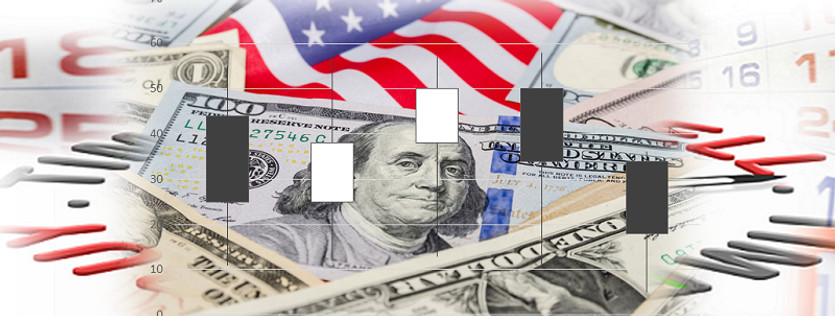The dollar is declining again. At the time of publication of this article, futures are traded near the mark of 90.46, being also in the middle of the range formed in the last few days between the local high of 90.91 and the local low of 89.95.
The inflation report released last Wednesday, which indicated its strong growth in April, alerted investors and market participants, who were betting on the further growth of the stock market and the weakening of the dollar.
Inflation is unfavorable for any investment instrument and its profitability. Rising inflation also raises uncertainty around the Fed's next moves.
Against this backdrop, on Wednesday, the S&P 500 and DJIA suffered their strongest three-day losses since late October after data on a sharp rise in consumer prices exacerbated fears about inflation.
According to data released on Wednesday, the consumer price index in the US in April rose 0.8%, which was the strongest monthly growth since 2009. In annual terms, inflation rose by 4.2% versus 2.6% between March 2020 and March 2021. This is the strongest acceleration in inflation since 2008.
The core CPI, which excludes volatile food and energy prices, climbed 0.9% in April and posted a 3.0% annual increase, the most significant gain since 1995.
On Thursday, a new batch of fresh macro data came from the United States, indicating a rise in inflation. Thus, the producer price index (PPI) of the USA in April increased by 0.6% (against the forecast of +0.3%). In annual terms, PPI rose by 6.2%. PPI, excluding food and energy prices, rose 4.1% on an annualized basis.
This is further evidence of a strong surge in inflation in the United States. However, this hardly surprised the markets and economists. In their view, supply is recovering more slowly than demand, which has received strong support after companies reopening, vaccinations, and fiscal and monetary stimulus.
And yet, market participants remain convinced that strong data from the US this week is still not enough to force the US Federal Reserve to move to tighten monetary policy.
Probably, according to FRS experts, and perhaps they will be right, the current inflation growth will be short-lived.
Although, it should be admitted, the key drivers for the dollar in the coming months will remain inflationary indicators in the US and the dynamics of Treasury bond yields.
Strong rise in consumer inflation in April triggered an increase in bond yields. Yesterday, the yield on 10-year US bonds jumped to 1.707%, which supported the dollar.

However, reassuring statements from the FRS that the acceleration of inflation is a temporary phenomenon may weaken the dollar again.
Today, market participants will follow the publication (at 12:30 and 13:15 GMT) of data on retail sales and industrial production in the United States. US retail sales are expected to rise 1% in April after rising 9.7% in March, while industrial production rose 1.0% in April from the previous month. This is good positive data. However, American stock indices may react to them more strongly and positively, and the dollar as a safe-haven asset in this case may weaken.
At 14:00 (GMT), the preliminary consumer confidence index from the University of Michigan will be released, reflecting the confidence of American consumers in the country's economic development. A high level indicates economic growth, while a low level indicates stagnation. It is expected that this indicator will be released in May with a value of 90.4 (previous values of the indicator were 88.3 in April, 84.9 in March, 76.8 in February, 79.0 in January 2021). There is a steady trend towards a gradual recovery in the growth of the indicator, which is positive for the USD. A rise in the indicator is likely to strengthen the USD in the short term, while a decrease in the value will weaken the dollar.





